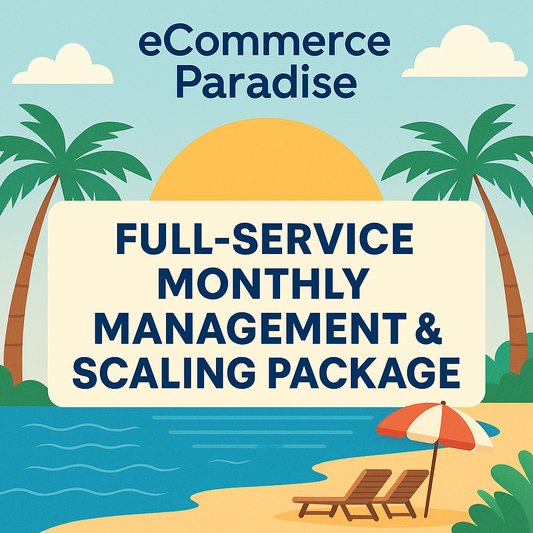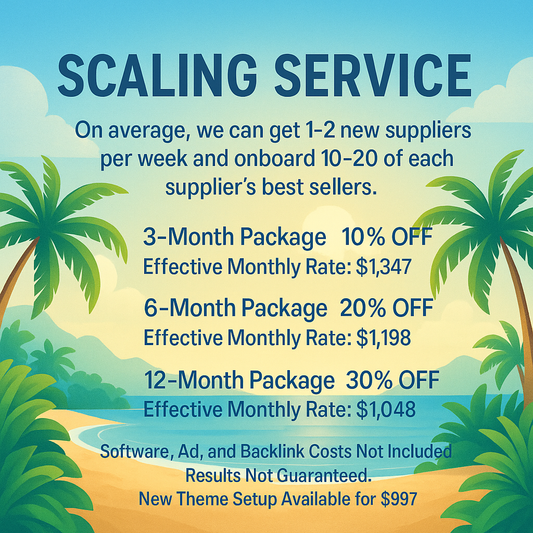
Maximize Your Shopify Store with Image Optimization Tips
Hey there, fellow entrepreneurs! Trevor Fenner here, founder of Ecommerce Paradise, and today we're diving deep into an often-overlooked aspect of running a successful Shopify store—image optimization. In this digital age, having gorgeous product images isn’t just a nice-to-have; it’s essential for capturing the eye of potential buyers and improving your SEO efforts. So let’s roll those sleeves up and get started!
The Importance of Image Optimization
When it comes to running an online store, the first impression is everything. High-quality images can make or break a sale, but there’s more to it than just what meets the eye. By optimizing your images, you're not only enhancing the user experience on your site but also improving your visibility on search engines like Google. That’s right—search engine optimization isn’t just about keywords; it encompasses all aspects of your website, including images.
Faster Loading Times
Did you know that a one-second delay in page loading time can lead to a 20% reduction in conversions? In the world of dropshipping and ecommerce, every second counts! Optimized images reduce loading times, ensuring users can browse your store without frustration. A smooth user experience boosts engagement and ultimately enhances your Google Shopping Ads performance!
Choosing the Right Format
Before you even start optimizing, you need to choose the right image format. The three most common formats are JPEG, PNG, and GIF. Each has its own pros and cons:
- JPEG: Best for photographs. It provides a balance between image quality and file size, making it ideal for product images.
- PNG: Great for images that require transparency and higher quality, like logos. However, PNGs can be larger in file size, which might affect load times.
- GIF: Best for simple animations but not recommended for product images due to low-quality color options.
Image Size Matters
Now that you have your image format set, it’s crucial to consider the actual size of your images. Large images can drastically slow down your site, so let’s talk about some methods to optimize them:
Resize Your Images
Make sure to resize your images to match their display dimensions on your website. For example, if your product image shows up at 400x400px, don’t upload a massive 2000x2000px image. Use photo editing software or online tools to resize your images properly before uploading them to Shopify.
Compress Images
Image compression reduces file sizes without sacrificing quality. Tools like TinyPNG or JPEG Optimizer can be a game-changer. Use these tools to maintain a balance between quality and speed, ensuring that your images look great while enhancing your ecommerce SEO.
Use Descriptive Alt Text
Alt text isn’t just for accessibility; it’s also a potent SEO tool. By describing each image accurately in the alt text field, you provide search engines with context about your images. Use relevant keywords naturally without overstuffing—this can improve your chances of ranking higher in image searches on Google!
Sample Alt Text Ideas
- “Handmade leather wallet for men - Ecommerce Paradise”
- “Eco-friendly yoga mat - Ideal for every yogi”
- “Vintage-style sunglasses with UV protection”
Leverage Image Sitemaps
Want Google to see all the stunning images on your store? Create an image sitemap! An image sitemap is an XML file that provides Google with information about the images on your site. Shopify automatically generates a sitemap, but it's always a good idea to check that it includes your images. This small step can significantly boost your visibility in search engine results.
Implement Lazy Loading
Lazy loading is a modern technique that defers loading images until they are needed. This means that images below the fold won’t load until the visitor scrolls down to them. It can significantly improve page load times, especially for long product pages. Shopify makes this easy, so take advantage of it!
Be Consistent with Images
Brand consistency is key to building trust and recognition. Remember to maintain a similar style across all images on your Shopify store. This not only makes your site visually appealing but also reinforces brand identity. Just like you would nail your email marketing campaigns with consistent messaging, your image style should also reflect your values and aesthetic.
Styling Your Product Images
- Use the same background color or style for all product images.
- Keep lighting consistent across different product shots.
- Use similar angles when photographing products for a cohesive look.
Utilize Images in Your Content Marketing
Images shouldn't be limited to product showcases. Use them in your blog posts, promotional emails, and social media content to engage your audience effectively. High-quality images can help you convey your brand story, boost your Email Marketing metrics, and encourage social sharing.
Best Practices for Using Images in Blog Posts
- Include images to break up text and maintain reader interest.
- Use infographics to illustrate complex concepts.
- Embed tutorial videos with relevant thumbnails to encourage clicks.
Monitor Your Results
Once you've implemented all these steps, it’s essential to track your image performance. Use Google Analytics or Shopify’s built-in analytics tools to see how optimized images impact your store traffic and conversion rates. Adjust your strategy based on these metrics to achieve even better results.
Your Image Optimization Checklist
To help you remember everything we've discussed, here’s a handy checklist:
- Choose the right format (JPEG, PNG, GIF).
- Resize images to match display dimensions.
- Compress images without losing quality.
- Use descriptive alt text and relevant keywords.
- Create an image sitemap.
- Implement lazy loading for better page speeds.
- Stay consistent with your image styles.
- Utilize images across all your content marketing efforts.
- Monitor performance and adjust as needed.
Get Started on Your Image Optimization Journey Today!
There you have it, folks! With these image optimization strategies, you’re well on your way to creating a visually stunning and fast-loading Shopify store that attracts traffic and converts visitors into loyal customers. Just remember, image optimization is not a one-time task; it's an ongoing process. Stay informed, keep experimenting, and watch your sales soar! Start optimizing your images today and see the difference it can make to your dropshipping business. Here’s to your success at Ecommerce Paradise!


















